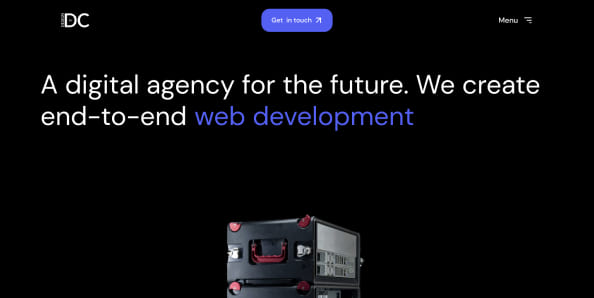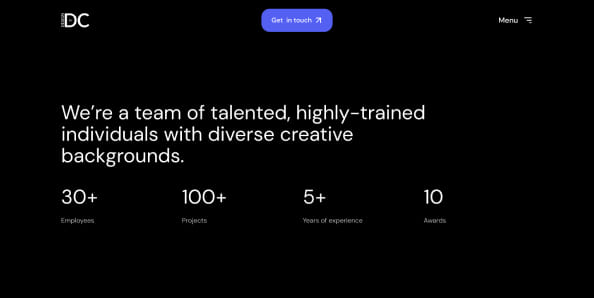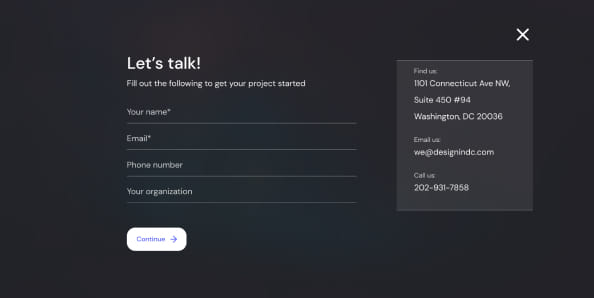Digital Marketing 101: Understanding the Basics
An effective digital marketing strategy can take your business to the next level, and failing to not have one can cause you to be missing out on a large potential of customers.
Every business needs a digital marketing strategy because it is your online business card, a way to reach a target audience, and one of the most important marketing tools you can leverage for your business.
In this article, we are going o talk about the concept of digital marketing and all the types of channels through which digital marketing is used. Then, will show you important statistics that will show why a digital marketing strategy is so important for any business.
What is digital marketing:
The term digital marketing is also widely known as online marketing. Online marketing is an umbrella term that refers to all marketing efforts and engagement activities done through some sort of online medium. There are 8 core online media channels: Web Design, Search Engine Marketing, Search Engine Optimization, Pay Per Click Advertising, Remarketing, Marketing Automation, Social Media Marketing, and Video Marketing. Later we discuss each of these in greater detail.
Why digital marketing is important:
As the business world continues to evolve and grow, so does digital marketing. It is important to be mindful of where your consumers are present, which according to the data it is telling us is online. Now more than ever consumers are attached 24/7 to some sort of electronic devices such as a laptop, desktop, smartphone, or tablet. Consider the following statistics
- The average consumer in the US is exposed to roughly 10,000 brand messages per day
- 92% of Americans prior to choosing a product or selecting a service provider will view the company’s website
- 84% of Americans at any given moment are shopping for something online
- 97% of people use the internet to find a service or product
- 93% of online interactions begin at a search engine
- 83% of consumers trust online reviews as much as a personal recommendation
- 86% of people search for the business’s location on Google Maps

Digital Marketing Basics: The Different Types of Digital Channels
1. Your Website
- One of the best marketing tools a company has is its website. A company’s site is like a storefront for the digital shopping world. A website is vital for any organization’s inbound lead marketing strategy. Inbound Marketing is a strategy that brings potential sales leads to your business via content that is created on your website. Outside an aesthetically and visually engaging website, your website will need these specific things in order to be successful.
- 1. It needs to be fast
- 2. It needs to be protected and secure
- 3. It needs to be mobile optimized
- 4. It needs to be easy to navigate and feature your company’s contact information
- 5. It needs to be optimized for SEO
- For full details on the previous bullets, please check out our DDC Blog article related to improving your website design
2. Search Engine Marketing (SEM)
- Your website needs to be findable on the web. So, how does someone find your online website? Most likely, they will find your site through a search engine, and that search engine platform will likely be Google. Google is the world’s preferred search engine tool. Search engine marketing is a marketing method that uses keywords, phrases, or questions to help drive a company to rank higher on search engine results. SEM can be done in two ways: Pay Per Click and Search Engine Optimization
3. Search Engine Optimization (SEO)
- SEO is an extension of SEM. SEO marketing is the digital marketing strategy of getting your site to rank higher organically through the search engine. This is done by updating and tweaking your site’s web code and visual content.
4. Pay Per Click Advertising (PPC)
- Pay Per Click is a term that refers to paid ads online. Businesses only pay when users click on their ad, hence the strategy name “pay per click”. Then there are also Paid Search Ads that show up in search results. These ads are triggered to display depending on searches of keywords or phases. On average, the top clicks go to the top three paid ads on the search results page 41% of the time. Another important stat is that people say paid search ads make looking for information that they want easier. Other types of ads within Pay Per Click are:
- Paid Search Campaigns
- Social Media Campaigns
- Google Local Services Ads
- YouTube Ads
- Display Ads
- Immersive Ads (VR & AR)
- Shopping Ads
- Nextdoor Ads
5. Remarketing
- Have you ever felt that the previous websites you have visited are following you in the form of their ads? It’s not your eyes playing tricks on you. That’s called remarketing. The way remarketing works is when someone visits your site through any device, your retargeting partner (Ex. Google Adwords) writes a few lines of code and drops an anonymous cookie into the user’s web browser. The cookie stores various information and tracks the history of the sites visited. Once the user of the cookie leaves your site, the cookie tells your ad platform when they land on another webpage. This sequence of actions will then lead to your remarketing ad appearing on the newly visited website. The reason why remarketing ad strategy is so powerful is that customers who are exposed to remarketing ads are 70% more likely to convert to your website. Remarketing strategy can also be used on social media platforms such as Twitter, Facebook, and LinkedIn.
6. Email Marketing and Marketing Automation
- Email marketing is marketing through the channel of email. This form of digital marketing has high ROI potential and is low budget. Marketing automation is an extension of email marketing but includes a form of messaging that is automatically triggered. There is a system in place and emails will be sent out according to certain cues. Consider the following email statistics:
- The first action leaders in business do in the morning is check their emails 66% of the time
- 61% of consumers enjoy receiving weekly promotion emails
- Email marketing on average has a 4,400% ROI, which in turn converts to $44 dollars for every $1 spent
7. Social Media Marketing
- Social Media Marketing is any marketing activity that is performed through a social media profile or outlet. The most popular platforms for social media marketing are Facebook, Twitter, LinkedIn, Pinterest, and Instagram. Keep in mind that posting organically will not produce the same results it did in the past due to changes in algorithms and so many people using the platforms to promote their business. You will have to use a combination of paid social media ads or else your campaign will likely go unnoticed.
8. Video Marketing
- Video marketing is marketing that is in the shape of a video. Marketing videos should be under 60 seconds, but to maximize the impact they really should be kept under 10 seconds. Today’s consumers prefer quick and informative video content. Video marketing is incredibly effective. Consider the following video marketing stats.
- An effective video is 50 times more likely to get a higher organic page ranking than just plain text.
- Half of the consumers say that watching a product video is very helpful and greatly impacts their decision-making process
- Videos keep consumers engaged on sites for two minutes longer, and 64% are more likely to buy.
- US consumers watch up to six hours of video content per day
- YouTube is the second-largest search engine in the world
- Videos can be leveraged to drive brand awareness and build trust
Tracking and Analytics: The data behind digital marketing
- None of your digital marketing efforts will matter unless you’re able to measure the results. Through data and reporting, you will be able to identify where you are indexing well and not so well. This is important to know in order to tweak marketing campaigns to help maximize your ROI. Something else that is key is understanding the difference between what is a metric and a KPI (Key Performance Indicator). A metric is a number that helps form a business-specific strategy. Examples of metrics are bounce rate, page views, time on the page, new visitors, and search rankings. A KPI evaluates the success of an organization in a particular activity in which it engages. The KPIs that really matter are total sales, leads, revenue, return on marketing investment, lead-to-sale conversion rate, cost per lead, and booking rate.

How to develop a winning digital marketing strategy:
- The success of your digital marketing strategy will all depend on the accuracy and how well you leverage the available data. You need to have a thorough understanding of your strengths and weaknesses as it relates to your go-to-market strategy. The best recommendation would be to self-evaluate by completing a digital competitive analysis. This report you give you an understanding of where you rank amongst your competition. It will also tell you about opportunities that they are using that you are not. Also, along with the analysis, you will receive a roadmap of the marketing channels that are most relevant to your business.
- In summary, digital marketing is online marketing efforts through the internet. It is important because consumers are online 24/7 looking for services & products, and you have to be where your customers are.
The different types of digital marketing channels:
- Your Website
- Search Engine Marketing (SEM)
- Search Engine Optimization (SEO)
- Pay Per Click Advertising (PPC)
- Remarketing
- Email Marketing and Marketing Automation
- Social Media Marketing
- Video Marketing
- Understanding and leveraging the data. Know how you are doing against your competition and look for avenues that you may not be utilizing to generate more exposure and leads. Make tweaks to struggling marketing campaigns to further your digital reach.
If you are needing to create and implement an effective digital marketing strategy, contact our full-service digital agency today! Not only does Design in DC offer a winning digital marketing strategy, but we can also assist with building a great website for you. Make sure to check out our blog post and contact us if you have any questions.
Where do you think digital marketing adds the most value to your business? Please let us know in the comments below.
Don’t forget to follow us on Social media if you want to stay up to date with all of the latest Design In DC news!












